In his novel Gladiator, Philip Wylie told the tragic tale of Hugo Danner, a young man both gifted and cursed by the great power given to him through his father’s experiments. Danner spends most of his short life attempting to find his place in a world both too small and fragile for him, yet too big and complex for him to instill lasting change. While the novel itself has been largely forgotten, it has been adapted into a comics format several times. In this edition of Retroactive Continuity, I’ll be reviewing Hugo’s appearances in comics over the years.
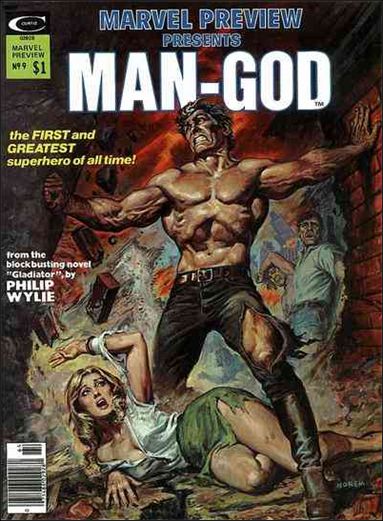 Marvel Preview #9 (Winter, 1976)
Marvel Preview #9 (Winter, 1976)
Publisher: Marvel
Writer: Roy Thomas
Art: Rich Buckler, Tony deZuniga
Cover: Earl Norem
“Man-God”
In his first adaptation of Wylie’s novel, Roy Thomas remains fairly faithful to the story, adapting the first half of the book from Hugo’s birth to the end of World War I. In order to begin the story with a gripping scene, Thomas rearranges the narrative so it opens with Hugo as a young man working as a deck hand on a cargo ship, just before he goes to war. The opening sequence is followed by a flashback revealing Hugo’s origins and the events leading him to join the French Foreign Legion.
At 52 pages, the comic is nearly as long as the book to that point in the story, so very little is left out, with most of the omissions coming out of Hugo’s birth and early years in favor of shifting focus to his early adulthood. Thomas also changes some details for dramatic effect. For example, in the opening sequence, Hugo dives off the ship to rescue a young boy who has fallen overboard into shark-infested waters. In the book, the victim is one of his fellow sailors. In general, the story is artfully told, though the one criticism of the writing is that some of the dialogue is stilted and clumsy in places, probably from attempting to compress the substance of pages of dialogue into a few panels.
The comic is published in a larger magazine format, so the art expands to fill the page. Buckler and deZuniga deliver solid artwork, though some may find the black-and-white format to be a drawback. The painted cover by Earl Norem is reminiscent of the 1930s pulp covers, and is beautifully rendered. Another interesting note on the artwork is that Hugo is drawn with a white streak in his hair, a departure from the novel, but a physical characteristic Roy Thomas would later include on Arn Munro.
Additionally, the comic includes a short biography of Philip Wylie and Supermen in Science Fiction, an essay by Don and Maggie Thompson that traces how the idea of humans gifted with extra abilities developed from ancient mythologies to modern times, culminating in Gladiator and eventually breaking out into comics’ superheroes. One passage in the essay that read: “Gladiator was a dead end in SF, Wylie having said most of what could be done with a straight extrapolation of such a character,” would be proven wrong over a decade later, as Roy Thomas brought Hugo Danner and his legacy into DC Continuity in the pages of The Young All-Stars.
All-in-all, this adaptation is well-done, and a worthy addition to the collection of any fan of the novel.
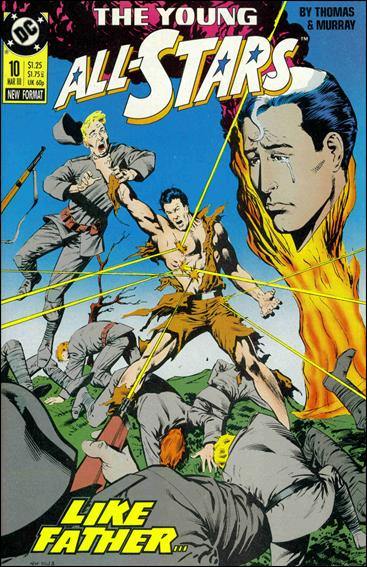 The Young All-Stars #10-11 (March/April, 1988)
The Young All-Stars #10-11 (March/April, 1988)
Publisher: DC
Writers: Roy and Dann Thomas
Art: Brian Murray (#10), Michael Bair, Malcom Jones III, and Grant Miehm (#11)
“Like Father” “…Like Son!”
These two issues were my introduction to Gladiator and Hugo Danner, and perhaps a little comics history is required here to explain how Hugo came to be part of the DC Universe. In the wake of Crisis on Infinite Earths, much of the continuity Roy Thomas had been using for All-Star Squadron was wiped from existence, including the Golden Age versions of Superman, Batman, and Wonder Woman. To compensate, Thomas created several new characters to help replace them in his World War II reality. All-Star Squadron ended, and The Young All-Stars succeeded it to focus on these new, younger characters. Thomas based many of his story lines in Young All-Stars on classic science fiction and fantasy novels, similar to the way Alan Moore would create the League of Extraordinary Gentlemen several years later. One of these new characters was Arn “Iron” Munro, a mysterious teenager with amazing strength, durability, and leaping ability of unknown origins (whose name was also inspired by two unrelated pulp characters named Aarn Munro and Iron Munro). In previous issues, Munro was told Hugo Danner was his biological father and also acquired Danner’s journal, which promised to fill in the details. Issue #10 opens with a standard framing sequence, as Arn settles into his room to read the journal. What follows is another adaptation of Gladiator, with the story modified to a first-person account by Hugo Danner (with a “handwritten note” added by Professor Hardin describing the events of Danner’s “death” at the end of the book).
 The book is compressed into only 22 comic pages, so this adaptation hits the high points, leaving a fast-paced retelling of the events in the novel. Thomas stays true to the story with few modifications and does a great job of telling the complete tale in only one issue. This was also his opportunity to finally finish the adaptation he began in Marvel Preview #9 by including the second half of the novel promised over a decade before. Brian Murray’s art manages to keep pace with the narrative-heavy story, his panels meshing well with the narration from Hugo’s journal.
The book is compressed into only 22 comic pages, so this adaptation hits the high points, leaving a fast-paced retelling of the events in the novel. Thomas stays true to the story with few modifications and does a great job of telling the complete tale in only one issue. This was also his opportunity to finally finish the adaptation he began in Marvel Preview #9 by including the second half of the novel promised over a decade before. Brian Murray’s art manages to keep pace with the narrative-heavy story, his panels meshing well with the narration from Hugo’s journal.
In the letters page for the issue, Roy Thomas included A Note on Hugo Danner, where he adds information about his source material. At the time, I became determined to read the book. The idea of a “Superman” novel published before Superman was even created was intriguing, and I started perusing book shops wherever I could in a vain attempt to locate it. It took about seven years before I tracked down a crumbling, dog-eared copy in a book store in Tampa while on a business trip. In comparison, when I decided to upgrade my copy a few years ago, it only took about five minutes on eBay! The Internet is a wonderful thing!
Young All-Stars #11 is the bookend to Hugo Danner’s story, as Roy and Dann Thomas reveal how Hugo managed to sire a son three years after his supposed death. The team arrives in Arn Munro’s hometown for a War Bond drive and Arn convinces his mother to tell the rest of the story. Her account includes several scenes about their early relationship cut from the novel’s adaptation in the previous issue, as well as adding one sequence Thomas omitted from both of his previous adaptations, where as a child, Hugo built a play-fort in the mountains out of wood and stone that a pair of hiking professors mistook for an ancient Indian ruin. Hugo confronts them and loses his temper, destroying the fort and threatening the terrified men into silence. Here also, Thomas finally departs from the book by revealing that Hugo survived his supposed death and returned to Colorado for a short period before disappearing again.
This issue also takes time to illustrate Arn’s discovery of his powers and to develop the relationships between the team members, especially Arn and Fury (it seems Arn inherited his father’s way with women!), and leads to Arn’s decision to continue with the team.
The art in issue #11 is handled by the team of Bair, Jones, and Miehm, who also handle the artistic chores with flair, though the difference in inkers is obvious in places.
Roy Thomas’ attempt to integrate Hugo Danner’s saga into DC Continuity as a replacement for the Golden Age Superman works well, and helps bring an element of established history to what are essentially substitute characters. It’s also rather fun to see early science fiction characters and concepts flow into established continuity so seamlessly.
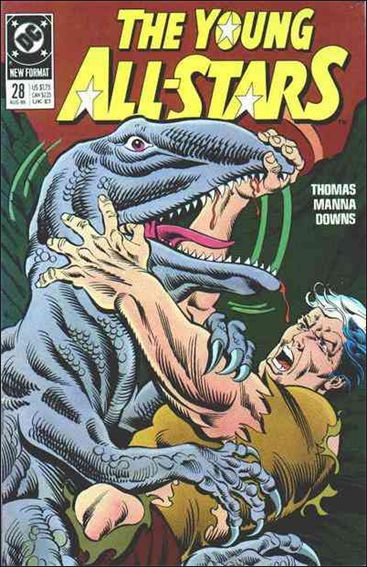 The Young All-Stars #28-31 (August-November, 1989)
The Young All-Stars #28-31 (August-November, 1989)
Publisher: DC
Writers: Roy and Dann Thomas
Art: Lou Manna, Bob Downs, Dave Simons (#30), Ken Branch (#31)
“Sons of Dawn”
The final story arc of The Young All-Stars series is technically not an adaptation of Gladiator, but rather a continuation of it (though issue #30 does have a one-page summary of the novel). Previously, the Young All-Stars had broken up and each member went his or her own way. Arn Munro discovers a photo of his father standing over a dead dinosaur, and invades Project M to discover the location where the picture was taken. He teams up with Georgia Challenger to mount an expedition to South America. As it turns out, Georgia is the daughter of Professor George Challenger, the protagonist of several Arthur Conan Doyle books, and the pair are searching for the jungle plateau Challenger discovered in Doyle’s The Lost World. They reach the plateau and are attacked by a pack of dinosaurs. Arn fights them off but is losing ground due to sheer numbers until aid arrives in the form of a dozen native youths exhibiting Arn’s abilities. Together, they defeat the dinosaurs, but nearly come to blows due to the language barrier until Hugo Danner steps out of the jungle.
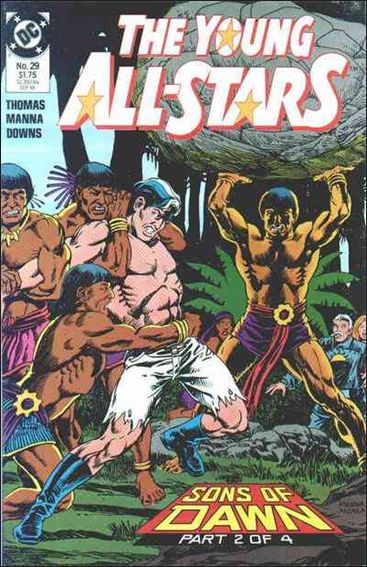 Hugo initially refuses to accept he has a son, but Arn convinces him, and he proceeds to relate the events following his apparent death at the end of the novel. Hugo had hiked deeper into the jungle, traveling from the Yucatan to South America, and eventually rediscovered Maple White Land (the Lost World), where he began living among the native Accala tribe.
Hugo initially refuses to accept he has a son, but Arn convinces him, and he proceeds to relate the events following his apparent death at the end of the novel. Hugo had hiked deeper into the jungle, traveling from the Yucatan to South America, and eventually rediscovered Maple White Land (the Lost World), where he began living among the native Accala tribe.
In the novel, Professor Hardin had advocated Hugo use his father’s notebooks to breed a whole civilization of men like himself, living separate from humanity, which would develop their own culture and eventually supplant mankind. Fearing the devastation a war between these beings would cause, Hugo had run off through the jungle and been killed by a bolt of lightning. As it turns out, Hugo had only faked his death to avoid detection and decided to leave the world behind. While living among the Accalas, though, Hugo decided to repeat his father’s experiments on the pregnant women of the village. The result were his “Sons of Dawn,” who he raised as his own. Arn and Georgia join Hugo and the Sons of Dawn in their village, but that night, the Sons attack and imprison him and Hugo, kidnap Georgia, and head off to conquer the world.
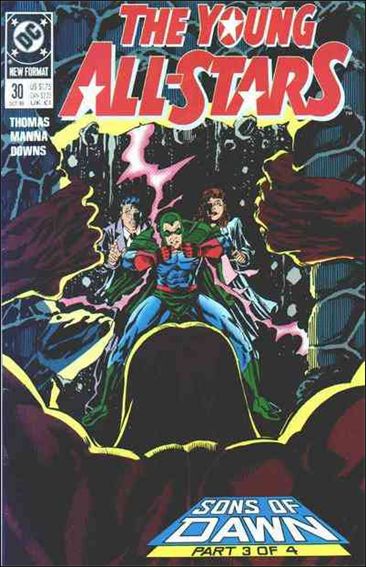 The first city they encounter is the capital of the nation of Rioguay, where Dan the Dyna-Mite is visiting his parents (the US ambassador to the small country). No one is able to stop the Sons of Dawn’s rampage, and even Dan’s powers can do little more than stagger them. Dan’s parents manage to broadcast a call for help, though, which is received by Fury at the All-Star Squadron’s headquarters. Together, the Squadron travels to Rioguay, but even their combined power isn’t enough to stop the Sons of Dawn. Meanwhile, Hugo escapes, revealing he had allowed himself to be captured as encouragement for the Sons to attack (a form of reverse psychology). Hugo arrive at the battle zone to join his army, but Arn also manages to escape and follow to rejoin his teammates.
The first city they encounter is the capital of the nation of Rioguay, where Dan the Dyna-Mite is visiting his parents (the US ambassador to the small country). No one is able to stop the Sons of Dawn’s rampage, and even Dan’s powers can do little more than stagger them. Dan’s parents manage to broadcast a call for help, though, which is received by Fury at the All-Star Squadron’s headquarters. Together, the Squadron travels to Rioguay, but even their combined power isn’t enough to stop the Sons of Dawn. Meanwhile, Hugo escapes, revealing he had allowed himself to be captured as encouragement for the Sons to attack (a form of reverse psychology). Hugo arrive at the battle zone to join his army, but Arn also manages to escape and follow to rejoin his teammates.
 Eventually, the Sons of Dawn are felled by an unforeseen weakness, and defeated, Hugo apparently commits suicide. Reunited, the Young All-Stars decide to join the All-Star Squadron as full-fledged members, a fitting end to the series.
Eventually, the Sons of Dawn are felled by an unforeseen weakness, and defeated, Hugo apparently commits suicide. Reunited, the Young All-Stars decide to join the All-Star Squadron as full-fledged members, a fitting end to the series.
The story is well-written, and it’s obvious Roy and Dann Thomas enjoy working the various vintage stories into their reality. Including Doyle’s Lost World was a touch of genius, and they certainly showed that there was more that could be done with the character of Hugo Danner. Between All-Star Squadron and Young All-Stars, Roy Thomas (with his wife, Dann) turned the Golden Age into his personal playground, and though Young All-Stars was at times a bit lackluster compared to its predecessor, both series are well-remembered even today.
The art by Manna and Downs (with inking assists from Simons and Branch) is well-done, though there were a couple of coloring errors here and there.
All in all, this arc was an exciting and deserving end to the series and Roy Thomas’ Golden Age saga, and it gave Hugo Danner one final original adventure.
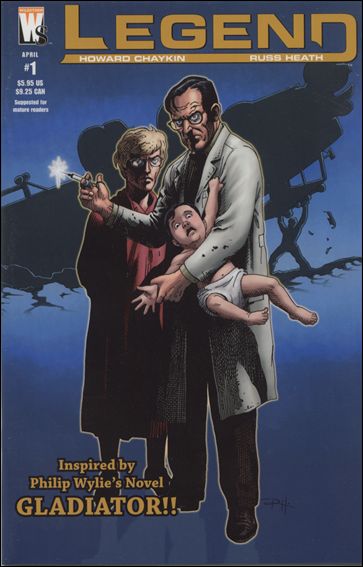 Legend #1-4 (April-July, 2005)
Legend #1-4 (April-July, 2005)
Publisher: WildStorm
Writer: Howard Chaykin
Art: Russ Heath
Legend is perhaps the most comprehensive adaptation of Gladiator. Stretching across four issues, it has plenty of space to tell the complete story and fully develop the characters. Chaykin’s primary departure from the novel is that he sets the story ahead in time approximately 40 years, so Hugo fights in the Vietnam War rather than World War I, giving the comic a more modern feel. Otherwise, the series is virtually identical to the novel, at times word-for-word.
 Chaykin does a great job in adapting the story, and he fleshes out the minor characters better than any other adaptation. Russ Heath’s art is impressive as well. The series is tagged for mature readers, and between the language, nudity, and gore, the rating is well-deserved. Chaykin’s inclusion of profanity is excessive at times and detracts from the story where it is overused. The violence, on the other hand, is actually closer to the book, where the war scenes, especially, are very graphic.
Chaykin does a great job in adapting the story, and he fleshes out the minor characters better than any other adaptation. Russ Heath’s art is impressive as well. The series is tagged for mature readers, and between the language, nudity, and gore, the rating is well-deserved. Chaykin’s inclusion of profanity is excessive at times and detracts from the story where it is overused. The violence, on the other hand, is actually closer to the book, where the war scenes, especially, are very graphic.
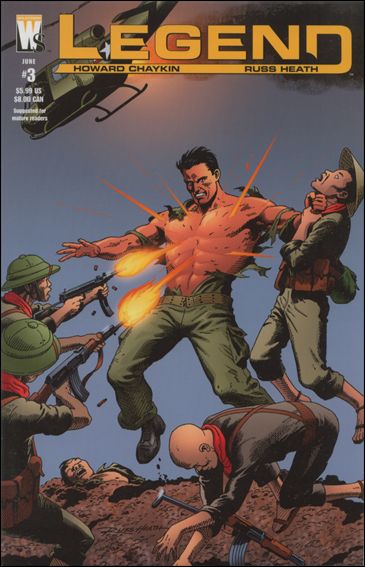 Setting the story in the Vietnam era hurts it, in my opinion. In the novel, Hugo becomes frustrated with his inability to affect large-scale effort on the front, and after witnessing death and injury to his friends, decides to gird up and make an all-out one-man charge into the heart of Germany, not stopping until he has killed the Kaiser and his generals. He is only stopped by the announcement of the armistice moments before he had planned to leave. This event showed his resolve to sacrifice everything, a suicidal impulse to go on a one-way mission and push himself to his limit and beyond. Since Vietnam never had such a clear-cut ending, that moment, a defining one for the character, is lost. Instead, he rages through the jungle, unfocused and in a glorified temper tantrum, until his fury is spent. When he rejoins his unit, leaping onto one of the last choppers out of Saigon, he has apparently gotten the rage out of his system, returning to his happy-go-lucky attitude. Overall, though, it’s a well-written and illustrated book, and I eagerly awaited each issue.
Setting the story in the Vietnam era hurts it, in my opinion. In the novel, Hugo becomes frustrated with his inability to affect large-scale effort on the front, and after witnessing death and injury to his friends, decides to gird up and make an all-out one-man charge into the heart of Germany, not stopping until he has killed the Kaiser and his generals. He is only stopped by the announcement of the armistice moments before he had planned to leave. This event showed his resolve to sacrifice everything, a suicidal impulse to go on a one-way mission and push himself to his limit and beyond. Since Vietnam never had such a clear-cut ending, that moment, a defining one for the character, is lost. Instead, he rages through the jungle, unfocused and in a glorified temper tantrum, until his fury is spent. When he rejoins his unit, leaping onto one of the last choppers out of Saigon, he has apparently gotten the rage out of his system, returning to his happy-go-lucky attitude. Overall, though, it’s a well-written and illustrated book, and I eagerly awaited each issue.
S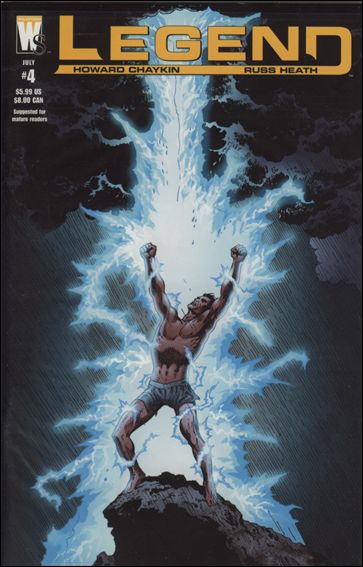 o, there you have it! The story of Hugo Danner, the “first” Superman, as told in both prose and comics form. I found each adaptation satisfying to read, and in the various versions, different elements of the novel were highlighted, depending on the goals of the writer. Roy Thomas’ first adaptation was a more-or-less direct retelling of the book, though it simplified the main themes; however, the fact that this was only the first half of a planned two-part story contributed to the omission of the story’s resolution and much of the emotional impact. His second attempt focused on providing the background required to integrate the character into a larger continuity, leading to Danner’s appearance in a later arc. Chaykin’s version worked to update the story for a modern audience and portray Danner as being involved in more recent events, and while he succeeded, some story elements suffered for it.
o, there you have it! The story of Hugo Danner, the “first” Superman, as told in both prose and comics form. I found each adaptation satisfying to read, and in the various versions, different elements of the novel were highlighted, depending on the goals of the writer. Roy Thomas’ first adaptation was a more-or-less direct retelling of the book, though it simplified the main themes; however, the fact that this was only the first half of a planned two-part story contributed to the omission of the story’s resolution and much of the emotional impact. His second attempt focused on providing the background required to integrate the character into a larger continuity, leading to Danner’s appearance in a later arc. Chaykin’s version worked to update the story for a modern audience and portray Danner as being involved in more recent events, and while he succeeded, some story elements suffered for it.
The book may be nearly forgotten, but the character lives on. Hugo’s son, Arn Munro, occasionally makes appearances in various DC titles, his inherited power gifting him with an extended lifespan. All-in-all, not a bad legacy for an obscure 1930 novel!
Tom McNeely
tom@comicattack.net


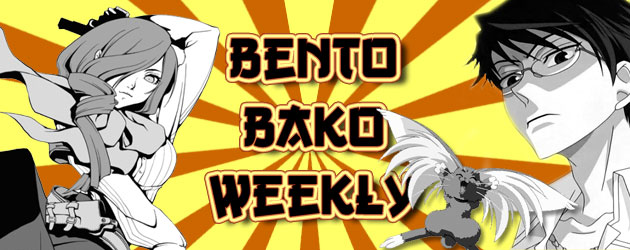
Great article Tom, I had no idea this even existed!
Which comic adaptation was your personal favorite? I think it’s cool when comics successfully pull off an adaptation taken from a novel. What comes to mind is the current ‘Do Androids Dream of Electric Sheep’ series being produced through BOOM! Studios. It’s a direct word for word adaptation from Philip K. Dick’s book and it sells incredibly well at my store.
What a coincidence, I was just reading some Marvel Previews earlier today. The Blade: Black and White Tpb has two issues in it.
I just shared your blog on my Facebook page. I had my Young All Stars professionally bound, and usually I re-read them in chronological order, which leads to fatigue and tedium when you get to the end, when it’s clear the writers were getting a little burned out.
This time around I read the Sons of Dawn first, followed by “Like Father, Like Son.” And the story resonated with me this time, particularly the complexity of Hugo Danner. Had Roy been more modern and less fanwanky, he may have been able to highlight Danner’s inner struggle, but all in all, it was very well done.
I even liked Dan Dunbar’s ineffectiveness, which I’d hated earlier because for a kid who can blow stuff up, he doesn’t accomplish anything. But here, I could see where his power would be inadequate, allowing his character development to shine. Which all makes sense since I included his appearance in Young Justice at the end of my bound volume. I also included Arn’s appearances in Manhunter, which gives the Iron Munro story a tragic, and rather depressing ending, but that’s DC for ya.
Thank you for your blog. I hope to get a hold of Legend one of these days as well. I wasn’t crazy about the modern style at first, but I might give it a try.